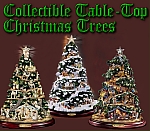|
Easter: Frequently Asked Questions - from Family Christmas OnlineTM
This article is a repository for general information about what English-speaking peoples call "Easter," the spring holy day that celebrates the resurrection of Jesus.
What Does Easter Celebrate?
Easter is the eighth-century Saxon name for the ancient Christian festival call "Pasch" in most of the world. Christians celebrate the day that Jesus, the founder of Christianity, rose from the dead. In some countries and some centuries, "Pasch" and "Easter" have described a "season" of festivals, including the week before (sometimes called Holy Week) and a day or more after the Resurrection.
Where Does the name "Pasch" come from?
Technically it used to refer to the Jewish feast that English Christians call Passover. According to the Bible, Jesus was killed during Passover week, then rose from the dead on the Sunday following Passover. That said, some Christians used to refer to the whole season - all of "Holy Week" and then some as "Pasch."
Where Does the name "Easter" come from?
Back in the seventh and eighth century AD, many Christians celebrated the Resurrection for most of the month of April. While most Christians were calling that celebration "Pasch," Saxons in England were calling that period Eosturmonath, after the Saxon name for April. According to one ancient source, that month was originally named after an otherwise unknown Saxon goddess named "Eostre," just as our month of March is named after the Roman god of war. Neo-pagan claims to the contrary, no element of Eostre-worship ever found its way into Christian celebrations of the Resurrection. Period. If you're going to lose sleep over using the English name for April to describe our annual celebration of the Resurrection of Jesus, you should also start worrying that when we celebrate St. Patrick's Day, we're "really" worshipping the Roman god of war, or that fireworks on July 4th are really praise offerings to Julius Caesar.
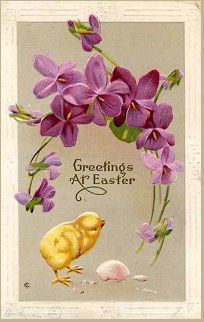 Why is Easter Celebrated in Spring? Why is Easter Celebrated in Spring?
The death and resurrection of Jesus occurred during the week of the Jewish festival of Passover, which is always celebrated in the spring. Even though the Christian church calendar has gotten out of sync with the Jewish calendar, Easter and Passover are always celebrated within a few weeks of each other. There's a bit more information below.
What is "Holy Week?
The final several days of Jesus' earthly ministry, including:
- "Palm Sunday" - The Sunday before Passover. Jesus rode into Jerusalem on a donkey, with the crowd shouting praises and waving palm branches.
- Monday through Wednesday - Jesus taught in the Temple during the day and spent the evenings in an olive garden outside the city walls.
- "Holy Thursday" - According to the chronology most churches follow, Jesus spent the Passover feast in Jerusalem with his disciples, went to the olive garden to pray, and was arrested by the temple guard. Some people think these events may have occurred on Wednesday.
- "Good Friday" - After a series of mock trials, Jesus was sentenced to death, was crucified, died on the cross, and was buried in a tomb that was sealed with a stone and guarded by the temple guard. Again, some people believe that Jesus' trial and crucifixion may have happened on Thursday.
- "Holy Saturday" - Largely quiet, since Jesus' followers were Jews obligated both by their religion and Judean rule to do nothing that could be construed as "work" on the Sabbath.
On Sunday morning, Jesus rose from the grave and began a series of appearances to his disciples, during at least two of which, he ate something to prove he was real and not a ghost. This is the Sunday that Christians in English-speaking countries call Easter, Christians in German-speaking countries call "Ostern," and all other Christians call "Pasch" (or some spelling variant due to language differences). Some people would count this Sunday as part of "Holy Week," some do not.
Why does "Holy Week" Wander Around the Calendar?
Holy Week was originally "pegged" to the Jewish festival of Passover. The Jewish religious calendar, however, varies in length from year to year. It's based on twelve 28-day (lunar) months, plus some extra days added to keep the spring festivals from slipping back into winter. And there's where things get weird - the number of days added each year varies. That's why Holy Week "wanders around" the calendar today. However it always occurs between the last week of March and the last week of April.
Why are Holy Week and Passover Out of "Synch"?
The Jewish calendar's lunar months were hard to calculate precisely. Until nearly 70 AD there were nearly as many Jewish Christians in Asia as Gentiles, so keeping the church calendar in sync with the Jewish calendar was not difficult. But as the Gentile-based church in Europe grew, Rome and Greece emerged as the new centers of church government and policy. Divorced from large Jewish populations, the church calendar of the Gentile churches eventually got out of sync with the Jewish calendar. At times, the church calendars used by different regions got out of sync with each other. After the Ottoman Empire's advances into Eastern Europe essentially cut the church in two, the Eastern (Orthodox) church's calendar went out of sync with the Western (Roman) church's calendar permanently.
So Christians in Western Europe (and most of the Americas) celebrate Holy Week at different dates than Christians in Eastern Europe, North Africa, and Asia. Occasionally one of the Holy Week dates will sync with Passover. But all three religious commemorations, now calculated under three separate interpretations of the old Jewish lunar calendar, wander around compared to "secular calendars." That said, they stay within the same parameters - between the last week of March and the last week of April.
What is the Church Calendar?
During the middle ages, the "church calendar" became more than a way to keep track of when to celebrate the major Holy Days. It became a cycle of topics to teach on every year, usually from the same cycle of scriptures. The cycle actually started four weeks before Christmas, during which Old Testament prophecies of the coming Messiah would be stressed and Gabriel's announcement to Mary is celebrated as the "Feast of the Immaculate Conception." After Christmas would come a festival (Epiphany) to celebrate the visit of the Magi to the infant Jesus and his family. Then would follow several weeks about the life of Christ in more-or-less chronological order. 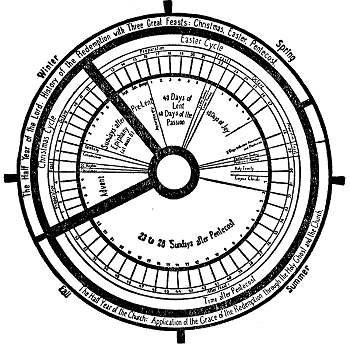 Then sometime in March would start a series of about six weeks leading up to Easter. After Easter, there was a nod to the "Second Coming." That was followed by a series of more general lessons for the summer and early fall, then Advent would start again. Then sometime in March would start a series of about six weeks leading up to Easter. After Easter, there was a nod to the "Second Coming." That was followed by a series of more general lessons for the summer and early fall, then Advent would start again.
Interspersed with the major "story line" is a plethora of saints' days, which tend to be scheduled according to the day they were martyred or some such. Individual saints' days may be important, especially to certain ethnic groups, but they stand outside the overall "story line" of the calendar.
I don't know how church leaders during the Dark Ages latched on to the idea of "reliving" the life, death, and resurrection of Christ every year. But it's one of the reasons some writers claim that the church co-opted the harvest and planting cycles of ancient "pre-Christian" religions. Writer C. S. Lewis' response to that claim is that God created the harvest and planting cycles in the first place. According to Lewis, this planted the whole notion of the death and resurrection of what Lewis called the "Corn King" so firmly in our collective consciousness that when we saw it happen to a real person, we'd recognize the hand of our Creator.
Having grown up Roman Catholic, I knew that - except for the major holy days - the calendar was largely a guideline. So I was surprised when the new pastor of a non-liturgical Protestant church we attended as adults refused to allow Christmas hymns or carols before December 25th because "Jesus hasn't been born yet." After three weeks of "O Come Oh Come, Emmanuel," I pointed out that Jesus actually had been born, a couple of millennia ago, in fact, and we should be allowed to celebrate that any day of the year. In the Roman Catholic church that wouldn't have been an issue. This wasn't actually a doctrine of the church we were attending, either - it was a personal glitch on behalf of the pastor, who turned out to have many worse glitches than that. (No, we don't go there any more.)
What is Lent?
At the time the church calendar was being worked out, Pasch (which the English later called Easter) was the most important holiday on the church calendar. So the period before Pasch was to be a forty-day period of contemplation and self-denial in which Christians would prepare themselves spiritually for the annual celebration of Jesus' resurrection.
For a time, Christians were forbidden to eat meat, milk, and eggs during the whole period of Lent, which meant that a lot of milk and eggs went to waste every spring. Eventually, Christians took to hard-boiling eggs last week of Lent to help preserve them.
Often converts or young Christians coming of age would spend Lent preparing to join the church (signified by "First Communion," below). They would undergo a period of training, to make certain they knew what they were doing, followed by a "confession" to make sure they were spiritually ready.
On Pasch Sunday, all of the self-denial was set aside to celebrate, and foods like eggs were suddenly on the menu again, leading to a Christian tradition of eating those saved-up hard-boiled eggs and even playing games with them.
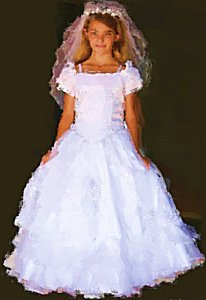 What's With the Girls in White Dresses? What's With the Girls in White Dresses?
For well over a thousand years, most churches had their "First Communion" services at Easter. The First Communicants would come in dressed in their finest to receive the "Body of Christ" for the first time.
In the first several centuries, all of the First Communicants would dress in white to represent that they had been "shriven" the day before and were pure enough to take the Eucharist.
At some point, the boys were allowed to forego wearing white as long as they wore "their best." But the tradition of girls in white dresses on Easter Sunday (or at least on First Communion Sunday, whenever that is celebrated) continues to this day.
 How did Eggs and Bunnies Get Attached to Easter? How did Eggs and Bunnies Get Attached to Easter?
Because most non-domesticated birds lay eggs only in the spring, eggs are symbols of spring in every agrarian society, Christians and otherwise. But for Christians, there was a bit more to it than that. During the middle ages, Christians had to give up meat, eggs, and dairy products for Lent. So a lot of eggs went to waste every year. One way to preserve eggs for an extra few days was to hard-boil them. Then on Pasch Sunday, you would eat the last several days' worth of eggs. In England, they were called "peace eggs" (a mispronunciation of "pasch eggs") long before they were called "Easter Eggs."
The oldest continuing tradition of colored eggs is probably the Eastern Orthodox tradition of dying the eggs you were going to eat on Pasch Sunday red, ostensibly to represent the blood of Christ. No one knows exactly how and when the tradition of giving colored eggs for Pasch spread across Europe, but it almost certainly followed the adoption of the church calendar and the Lenten prohibition of eggs.
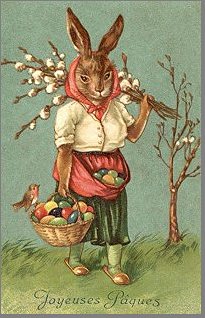 Hares (which are larger relatives of rabbits) were also symbols of spring throughout Europe, because they're highly visible right after they've emerged from their winter sleep. (Later on, they settle down to behavior patterns that make them harder to spot.) Hares (which are larger relatives of rabbits) were also symbols of spring throughout Europe, because they're highly visible right after they've emerged from their winter sleep. (Later on, they settle down to behavior patterns that make them harder to spot.)
At some point in the late Renaissance, a folk tradition that hares bring the colored eggs emerged among German Lutherans. As the tradition spread west, countries with more wild rabbits than wild hares adapted the tradition to include rabbits.
For more information about "Easter bunnies" and colored eggs, please check out our article on The Myth of the Myth of the Easter Bunny.
What is "The Passion"?
The old use of the word "passion" refers to an all-consuming experience - in this case, one of betrayal and pain. Technically, "The Passion" refers to the period of Jesus' suffering between his prayers in the olive garden and his death and burial. In some contexts, "The Passion" refers to the entire last week of Jesus' life on earth, starting with Palm Sunday, or even earlier. In the Middle Ages, "Passion plays," often written by clergy, portrayed the week from Palm Sunday to the removal of Jesus from the Cross.
In my youth, many Christians criticized the "rock opera" Jesus Christ, Superstar, because it ended with Jesus' death, not showing his resurrection. There is a lot to criticize about Superstar, but the complaint that it doesn't include the resurrection misses the mark - it was intended to be a sort of modern-day Passion play, and it ends right where it should. Actually it could have ended a song or two sooner, but that's another discussion.
In the Roman Catholic church, it's traditional, on the first Good Friday service, to read the entire Gospel passage about the trials of Jesus from Matthew 26 and 27. This part of the service is also called "The Passion." When I was little, you stood for the whole thing. When you're six, standing still for that long can seem excruciating.
What are the Stations of the Cross?
In one sense, the "Stations of the Cross" are 14-15 pieces of art, displayed evenly around the walls of the church, each depicting a stage in the execution of Jesus.
Some of the "stations" are described in the Bible, such as Simon of Cyrene being drafted to carry the cross. Others are based on medieval myths, such as a miracle story in which a woman wipes Jesus' face and His likeness miraculously appears on her cloth.
During Lent, it's common for the church to have one "Stations of the Cross" service a week. This consists of the priest and his attendants moving slowly around the church, saying appropriate devotional prayers at each station. Although the "Stations" services are not limited to Lent, they add one more layer of "contemplation" to the season.
Did the Early Church Really Believe that Jesus Rose from the Dead?
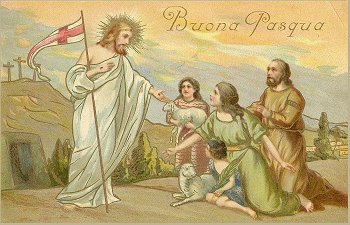 Yes. All the writings of all Christian writers from the earliest dates on show this belief. These include the books that eventually found their way into the New Testament, and all the writings of the next generation, sometimes called the "Church Fathers." Yes. All the writings of all Christian writers from the earliest dates on show this belief. These include the books that eventually found their way into the New Testament, and all the writings of the next generation, sometimes called the "Church Fathers."
Atheists, Neo-Pagans, and fantasy authors like Dan Brown like to claim that the basic doctrines of Christianity were invented during the fourth-century councils of Nicea. But every doctrine spelled out in the "Nicene Creed" was prefigured by the earliest creeds and writings.
(For more information about early Christian creeds, please check out our article What is a Creed? on one of our sister sites, SchoolOfTheRock.com.)
Is Jesus' Resurrection the End of the Story?
No, unlike the ending of (spoiler alert) The Sting and E.T. the "happy ending" goes far beyond the hero not being dead any more. According to the Bible, He met with his disciples to reassure them and explain things they hadn't been able to understand before. Then He asked them to "spread the good news" and returned to Heaven.
In addition, Jesus had already promised his disciples that:
- He was going to prepare a place for them in his "Father's house."
- He would send the Holy Spirit, who would encourage them (us) and help them (us) understand Jesus' teaching.
- He would be with them (us) always.
- He would return to judge and rule the world.
 Jesus' promises to his disciples included references to many Old Testament prophecies about the "Son of Man" coming to "make all things right." Jesus' disciples had hoped He would fulfill these prophecies on his first visit to earth, but Jesus made it perfectly clear that He will do that when He comes back - echoing prophecies in Isaiah 53 and Daniel 10. Both of those prophetic passages indicated that the God's chosen one would suffer and die before He saw his "reward" and his "descendants." Jesus' promises to his disciples included references to many Old Testament prophecies about the "Son of Man" coming to "make all things right." Jesus' disciples had hoped He would fulfill these prophecies on his first visit to earth, but Jesus made it perfectly clear that He will do that when He comes back - echoing prophecies in Isaiah 53 and Daniel 10. Both of those prophetic passages indicated that the God's chosen one would suffer and die before He saw his "reward" and his "descendants."
According to those prophecies, Jesus will come for His own at a time few expect and no one knows. Great political, military, and natural crises will sweep the globe, after which Jesus will defeat the enemies of His people and set up a new, glorious kingdom that will far outshine anything the world has ever seen, and which will be known for justice, compassion, and peace.
Many other blessings that are included among the prophecies clearly refer to Jesus. Some of them He alluded to directly. But the point is, Jesus' resurrection is not the end of the story. As C.S. Lewis would say, it is the end of the beginning.
More Questions?
This is by no means a complete list of questions that could be asked. Please send us any questions you have about Easter or any corrections, comments, criticism, or additions you would like to make about this article. Either way, we'll be very glad to hear from you.
Have a Blessed Easter - Thanks for stopping by. God grant you and your loved ones grace and a spirit of generosity and service this season.
Paul D. Race, Family Christmas Online
For more information about Easter, Easter traditions, and related subjects:
- Introduction to Easter - A brief introduction and links to our other articles.
- Easter: Frequently Asked Questions - Want to know why Holy Week wanders around the calendar? What the Stations of the Cross are? Why we call Easter "Easter" when almost every other culture calls it "Pasch"? And many more.
- The Timeline of the Resurrection - If you read the gospel accounts one at a time, they can be confusing. This shows the timeline, as most people see it.
- Why Easter is Sacred to Me
- The Myth of the Myth of the Easter Bunny - Where did the Easter Bunny really come from and how did it get attached to so many urban legends?
- Timeline of Easter Traditions - how far back in time do Easter Eggs, or the Easter Bunny go? Did the church really start celebrating the Resurrection as late as the fourth century AD, as certain writers would have you believe? Was the ancient Teutonic deity some folk claim was the original source of all of our doctrine and celebrations of the Resurrection really - for all intents and purposes - invented eighteen centuries after Jesus' crucifixion?
- Eostre: Frequently Asked Questions - Why do we "know" so much about Jacob Grimm's hypothetical ancient Germanic goddess today when all we have is a single allusion ancient writings, and research has turned up no new facts since 725AD?
- Bede's Statement about the Saxon Name for Pasch (Easter) - A brief look at the only mention of anyone named anything like Eostre or Ostara in anywhere before 1835.
- Jacob Grimm - A brief look at Grimm's research and why this fairy-tale collector and linguist invented a hypothetical "ancient" Germanic goddess in 1935 and dubbed her Ostara (the German equivalent of the Saxon "Eostra").
- Pope Gregory's Letter to Mellitus - a look Pope Gregory's 601AD letter to a missionary trying to reach the Saxons in Britain. We list it here only because so many writers misrepresent its contents.
- To My Pagan Friends at Easter - A side note to folks who need to believe in something.
To return to the Family Christmas OnlineTM Home Page, click here.
|

|
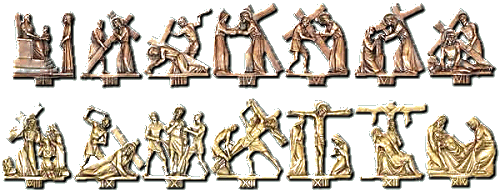
 Yes. All the writings of all Christian writers from the earliest dates on show this belief. These include the books that eventually found their way into the New Testament, and all the writings of the next generation, sometimes called the "Church Fathers."
Yes. All the writings of all Christian writers from the earliest dates on show this belief. These include the books that eventually found their way into the New Testament, and all the writings of the next generation, sometimes called the "Church Fathers."
 Jesus' promises to his disciples included references to many Old Testament prophecies about the "Son of Man" coming to "make all things right." Jesus' disciples had hoped He would fulfill these prophecies on his first visit to earth, but Jesus made it perfectly clear that He will do that when He comes back - echoing prophecies in Isaiah 53 and Daniel 10. Both of those prophetic passages indicated that the God's chosen one would suffer and die before He saw his "reward" and his "descendants."
Jesus' promises to his disciples included references to many Old Testament prophecies about the "Son of Man" coming to "make all things right." Jesus' disciples had hoped He would fulfill these prophecies on his first visit to earth, but Jesus made it perfectly clear that He will do that when He comes back - echoing prophecies in Isaiah 53 and Daniel 10. Both of those prophetic passages indicated that the God's chosen one would suffer and die before He saw his "reward" and his "descendants."


